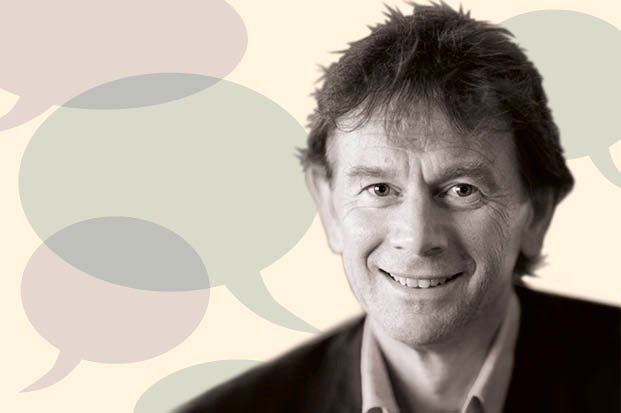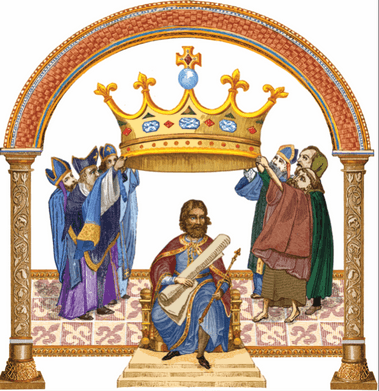Michael Wood on the coronation of Charles III
"The symbolism of the royal promise still means something today," writes Michael Wood

For 1,500 years kingship was the great institution that held society in Europe together. It appears to be almost over now, save for the last ceremonial flickerings in places like Madrid, Copenhagen and Windsor. Yet monarchy still carries meaning. When Elizabeth II was crowned in 1953, Britain still had an empire, and the symbolism of empire still pervaded the ceremony. The deep residual feelings the queen aroused later also lay in the fact that she had lived through all the great national events since the Second World War: in her person she embodied the national memory. But as the late Tom Nairn showed in his book The Enchanted Glass, the monarchy also embodied real power. As Nairn laid out, it was not just a tourist spectacle, but an essential part of our parliamentary state, through which the British ruling class continued to maintain themselves and their wealth.
The medieval English monarchy claimed its ancestry went back to an Anglo-Saxon adventurer called Cerdic in the sixth century. There are problems with that story. For starters the name is Welsh not Old English, and it’s likely the whole migration narrative told in the Anglo-Saxon Chronicle in the 890s is an invention. Its real roots lie in a mix of British and Germanic freebooters and foederati (mercenaries) in the Thames Valley who called themselves Gewisse, “the ones who keep their word”. They later became known as West Saxons, positioned west of the Middle and South Saxons. Their ruling elite adopted Christianity after AD 635, but they remained a minor regional kingdom until their rise to power in southern England in the ninth century during the Danish invasions. They then became the dominant partner in the “kingdom of the Anglo-Saxons”, that is, of the Angles of Mercia and the Saxons of Wessex. It is that union that lies behind the first English coronation.

Though Alfred the Great’s son Edward the Elder seems to have been crowned in AD 900, it is with Æthelstan that coronation history really begins, at Kingston on 4 September AD 925. We have a surviving Gospel Book (on which the king swore his oath?), which records the freeing of a slave by the new king at the altar; and a charter naming the Mercian bishops present. The order of service can be reconstructed from several surviving manuscripts.
These are the words spoken by the king as his first decree to his people: “I promise to observe these three things to the Christian people subject to me: First that the church and all Christian people preserve true peace at all times. Second I forbid all rapacitates (unjust seizure, robbery, plundering) and all evil doing to all classes of society. Third that in my judgments I will enact equity and mercy, that therefore the kind and merciful God may in turn grant us his mercy.”
This so-called promissio regis drew on political ideas that arose in the Carolingian renaissance. The gap between ideal and reality was huge, of course, but at the core was the idea that the king’s justice should be impartial and protect the poor and downtrodden.
There hasn’t, in fact, been continuity of use, but when the ceremony was revived in 1902, Edward VII’s think-tank went back to the Old English text of the coronation, as if to say that royal authority in some sense stemmed from the kingship created in the 10th century.
My dear friend the late Patrick Wormald liked to say that England was the oldest continuously existing state in the world. “What about China?” I would say. “Continuous,” he answered, pointing to the great ruptures in Chinese history like the Mongol Conquest in the 13th century. I would still go for China. but it is a remarkable continuity.
For many people today, monarchy is an anachronism, simply a nostalgic focus for national feeling (though some believe it continues to underwrite our class system). But the symbolism of the royal promise still has meaning. Like the Hippocratic Oath it goes to the root of what government is supposed to be about – even if kings and queens of the past didn’t often live up to those high Carolingian ideals.
More like this
So what does King Charles III think his office is for in the 21st century? As a student of the Old English state, I shall be watching the precise wording of the service on 6 May 2023 with great interest.
This column first appeared in the May 2023 issue of BBC History Magazine
Authors

Start the year with a subscription to BBC History Magazine - £5 for your first 5 issues!
As a print subscriber you also get FREE membership to HistoryExtra.com worth £34.99 + 50% London Art Fair 2024 Tickets





